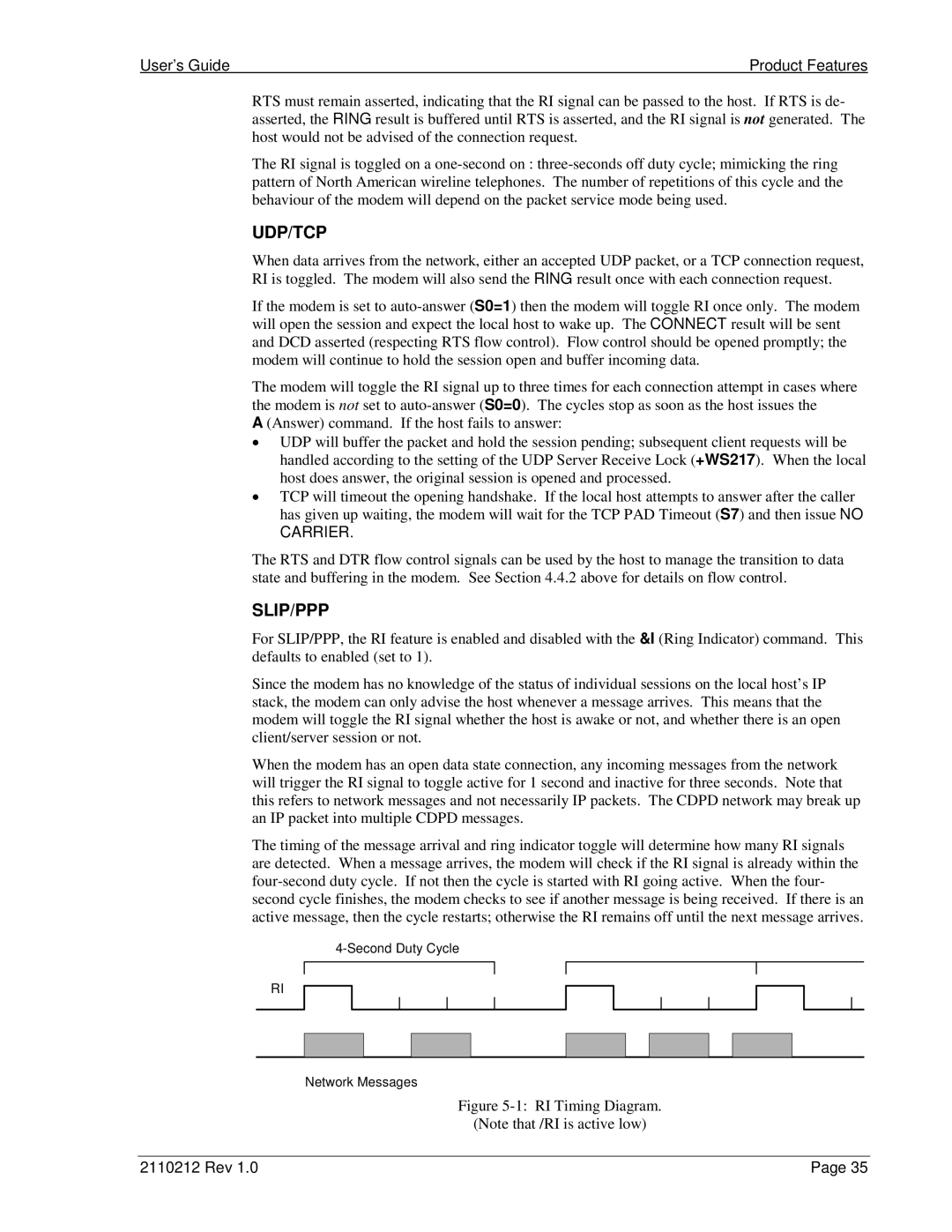
User’s Guide | Product Features |
RTS must remain asserted, indicating that the RI signal can be passed to the host. If RTS is de- asserted, the RING result is buffered until RTS is asserted, and the RI signal is not generated. The host would not be advised of the connection request.
The RI signal is toggled on a
UDP/TCP
When data arrives from the network, either an accepted UDP packet, or a TCP connection request, RI is toggled. The modem will also send the RING result once with each connection request.
If the modem is set to
The modem will toggle the RI signal up to three times for each connection attempt in cases where the modem is not set to
A (Answer) command. If the host fails to answer:
•UDP will buffer the packet and hold the session pending; subsequent client requests will be handled according to the setting of the UDP Server Receive Lock (+WS217). When the local host does answer, the original session is opened and processed.
•TCP will timeout the opening handshake. If the local host attempts to answer after the caller has given up waiting, the modem will wait for the TCP PAD Timeout (S7) and then issue NO CARRIER.
The RTS and DTR flow control signals can be used by the host to manage the transition to data state and buffering in the modem. See Section 4.4.2 above for details on flow control.
SLIP/PPP
For SLIP/PPP, the RI feature is enabled and disabled with the &I (Ring Indicator) command. This defaults to enabled (set to 1).
Since the modem has no knowledge of the status of individual sessions on the local host’s IP stack, the modem can only advise the host whenever a message arrives. This means that the modem will toggle the RI signal whether the host is awake or not, and whether there is an open client/server session or not.
When the modem has an open data state connection, any incoming messages from the network will trigger the RI signal to toggle active for 1 second and inactive for three seconds. Note that this refers to network messages and not necessarily IP packets. The CDPD network may break up an IP packet into multiple CDPD messages.
The timing of the message arrival and ring indicator toggle will determine how many RI signals are detected. When a message arrives, the modem will check if the RI signal is already within the
RI
Network Messages
Figure 5-1: RI Timing Diagram.
(Note that /RI is active low)
2110212 Rev 1.0 | Page 35 |
